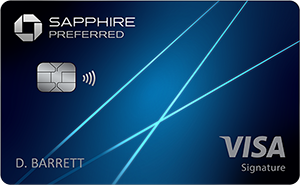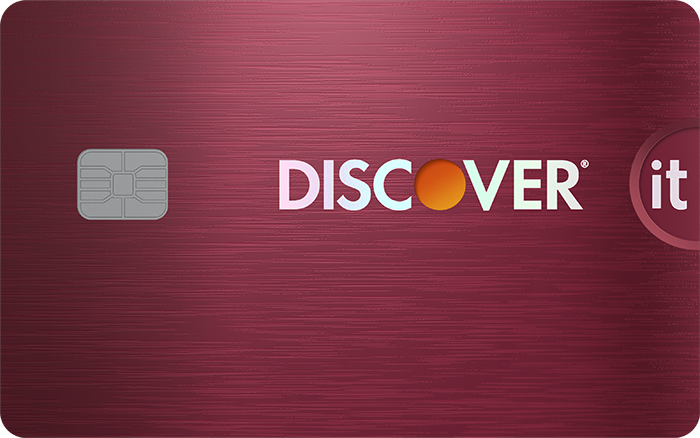If you want to avoid the annual fee on a credit card, canceling isn't your only option. You can also downgrade your credit card by swapping it for a more affordable or no annual fee option in the card issuer's lineup.
In many cases, a downgrade is a better choice than canceling a credit card. Here's a detailed look at how to downgrade a credit card and how to figure out if it's the right way to go.
How to downgrade a credit card
Here's the quick, simple process to downgrade a credit card:
- Choose your new credit card. Keep in mind, your new card needs to be from the same card issuer and in the same product line as your current card. Reach out to your card issuer by phone or chat if you want to know what your downgrade options are.
- Call the card issuer and ask for the downgrade. With most credit card companies, you need to call to downgrade or upgrade a credit card. Check the back of your credit card for the card issuer's phone number. When you speak to a representative, let them know you want to downgrade your credit card, and tell them which new card you want.
The card issuer can approve or deny the downgrade. Downgrades are usually successful, given that you're moving down in the card issuer's lineup.
If the downgrade is approved, the card issuer mails you a new card. In most cases, the card number doesn't change, so you can continue using your old card until the new one arrives.
How does downgrading a credit card work?
When you downgrade a credit card, you switch your card for one with a lower annual fee from the same card issuer.
Usually, to change credit cards, you need to cancel your old card and apply for a new one. Both of those actions can impact your credit score. When you downgrade a credit card, however, your credit is not affected.
Card issuers only let you downgrade to credit cards in the same product line. However, it's not always obvious which credit cards qualify. If you're not sure, the best option is to contact the card issuer.
For example, imagine you have the Chase Sapphire Reserve®, which carries a hefty annual fee. You don't want to pay that annual fee anymore. Here are some examples of downgrade options:
- You could downgrade to the Chase Sapphire Preferred® Card which has a much lower annual fee. Both cards are in the Chase Sapphire line.
- You could downgrade to a no annual fee Chase Freedom card, such as the Chase Freedom Flex℠. It may seem confusing that Chase will let you go from a Sapphire card to a Freedom card, but it will.
- You couldn't downgrade to the Marriott Bonvoy Boundless® Credit Card. While Chase Sapphire and Chase Freedom cards are part of the same product line, Chase Marriott Bonvoy cards aren't.
Credit card comparison
We recommend comparing options to ensure the card you're selecting is the best fit for you. To make your search easier, here's a short list of standout credit cards.
| Offer | Our Rating | Welcome Offer | Rewards Program | APR | Learn More |
|---|---|---|---|---|---|

Apply Now for Bank of America® Unlimited Cash Rewards credit card
On Bank of America's Secure Website. |
Rating image, 4.50 out of 5 stars.
4.50/5
Our ratings are based on a 5 star scale.
5 stars equals Best.
4 stars equals Excellent.
3 stars equals Good.
2 stars equals Fair.
1 star equals Poor.
We want your money to work harder for you. Which is why our ratings are biased toward offers that deliver versatility while cutting out-of-pocket costs.
|
$200 cash rewards $200 online cash rewards bonus after you make at least $1,000 in purchases in the first 90 days of account opening | 1.5% cash back |
Intro: 0% Intro APR for 15 billing cycles for purchases. 0% Intro APR for 15 billing cycles for any balance transfers made in the first 60 days. After the intro APR offer ends, 18.24% - 28.24% Variable APR on purchases and balance transfers will apply. Balance transfers include a fee of 3% for 60 days from account opening, then 4%. Purchases: 0% Intro APR for 15 billing cycles for purchases Balance Transfers: 0% Intro APR for 15 billing cycles for any balance transfers made in the first 60 days Regular: 18.24% - 28.24% (Variable) |
Apply Now for Bank of America® Unlimited Cash Rewards credit card
On Bank of America's Secure Website. |

Apply Now for Chase Sapphire Preferred® Card
On Chase's Secure Website. |
Rating image, 4.50 out of 5 stars.
4.50/5
Our ratings are based on a 5 star scale.
5 stars equals Best.
4 stars equals Excellent.
3 stars equals Good.
2 stars equals Fair.
1 star equals Poor.
We want your money to work harder for you. Which is why our ratings are biased toward offers that deliver versatility while cutting out-of-pocket costs.
|
60,000 bonus points Earn 60,000 bonus points after you spend $4,000 on purchases in the first 3 months from account opening. That's $750 when you redeem through Chase Travel℠. | 5x on travel purchased through Chase Travel℠, 3x on dining and 2x on all other travel purchases Enjoy benefits such as 5x on travel purchased through Chase Travel℠, 3x on dining, select streaming services and online groceries, 2x on all other travel purchases, 1x on all other purchases, $50 Annual Chase Travel Hotel Credit, plus more. |
Intro: N/A Purchases: N/A Balance Transfers: N/A Regular: 21.49%-28.49% Variable |
Apply Now for Chase Sapphire Preferred® Card
On Chase's Secure Website. |
|
Rating image, 5.00 out of 5 stars.
5.00/5
Our ratings are based on a 5 star scale.
5 stars equals Best.
4 stars equals Excellent.
3 stars equals Good.
2 stars equals Fair.
1 star equals Poor.
We want your money to work harder for you. Which is why our ratings are biased toward offers that deliver versatility while cutting out-of-pocket costs.
|
Discover will match all the cash back you’ve earned at the end of your first year. N/A | 1% - 5% Cashback Earn 5% cash back on everyday purchases at different places you shop each quarter like grocery stores, restaurants, gas stations, and more, up to the quarterly maximum when you activate. Plus, earn unlimited 1% cash back on all other purchases—automatically. |
Intro: Purchases: 0%, 15 months Balance Transfers: 0%, 15 months Regular: 17.24% - 28.24% Variable APR |
What are the benefits of downgrading a credit card?
The benefits of downgrading a credit card are:
- It's less expensive. Your new credit card will have a lower annual fee than the old one. You can also avoid an annual fee entirely if you downgrade to a no annual fee credit card.
- You keep your credit account open. Although you'll have a different credit card, it will be considered the same credit account. That's especially important because the age of your credit accounts is a factor in your credit score. When you downgrade a credit card instead of canceling it, the account keeps getting older, which will help your credit. You'll also still have its credit line to use. More available credit can help you maintain a lower credit utilization ratio, another credit score factor.
- There's no credit check. When you open a new credit card, there are two ways your credit score can be dinged: The application itself requires a hard credit check, which causes a slight credit score drop. And a new credit account lowers the average age of your credit accounts. If you downgrade a credit card, you can avoid both concerns.
What are the drawbacks of downgrading a credit card?
The drawbacks of downgrading a credit card are:
- Fewer benefits. You sacrifice perks when you downgrade a credit card. You'll need to decide if the money you save is worth what you're giving up.
- No introductory offers. For the most part, you can't get introductory offers when you downgrade a credit card. If your new card offers a special 0% intro APR on purchases, that's likely only available to new cardholders, not existing cardholders who downgrade. The same is true with sign-up bonuses.
You may also face a problem if you downgrade a credit card too early. Card issuers sometimes frown on consumers who open cards and downgrade them within the first year. This can be considered a form of gaming the system -- getting a card, usually for a sign-up bonus, and then downgrading it before the annual fee comes due.
American Express states in the terms and conditions for its cards that it may take back bonus rewards and close the cardholder's account if the card is downgraded within 12 months.
Some credit card companies won't let you downgrade a credit card at all in the first year. To be safe, even if you're allowed to, avoid downgrading a credit card until you've had it for a year or longer.
Should I downgrade my credit card?
The decision to downgrade a credit card ultimately depends on whether you think the annual fee is worth it. If you don't feel you're getting your money's worth, a downgrade could be the solution.
These are the typical situations when you should consider downgrading a credit card:
- You aren't using the card much. If you aren't taking advantage of the card's perks or earning many rewards, then it doesn't make sense to keep paying an expensive annual fee.
- You've found a better option. Sometimes it's not that you aren't using the card anymore; it's that you've found another card that works better for you. Since you probably don't need two credit cards with similar features, you could downgrade the one you no longer need.
In either case, you could also close the credit card. Canceling isn't necessarily a bad decision if you don't need the card anymore.
You have options when you don't want to pay a credit card's annual fee. A downgrade is ideal for when you don't want to lose the credit card account entirely.
Still have questions?
Here are some other questions we've answered:
FAQs
-
You can downgrade a credit card to another card in the same product line. To do so, call the card issuer and let them know which card you'd like for the downgrade. The card issuer will approve or deny your request.
-
There are advantages to downgrading a credit card instead of canceling it. The most important is that you won't lose the card's credit line or its account history. If you did, both could decrease your credit score.
-
Downgrading a credit card won't cause any changes to your credit score.
Our Credit Cards Experts
We're firm believers in the Golden Rule, which is why editorial opinions are ours alone and have not been previously reviewed, approved, or endorsed by included advertisers. The Ascent does not cover all offers on the market. Editorial content from The Ascent is separate from The Motley Fool editorial content and is created by a different analyst team.
